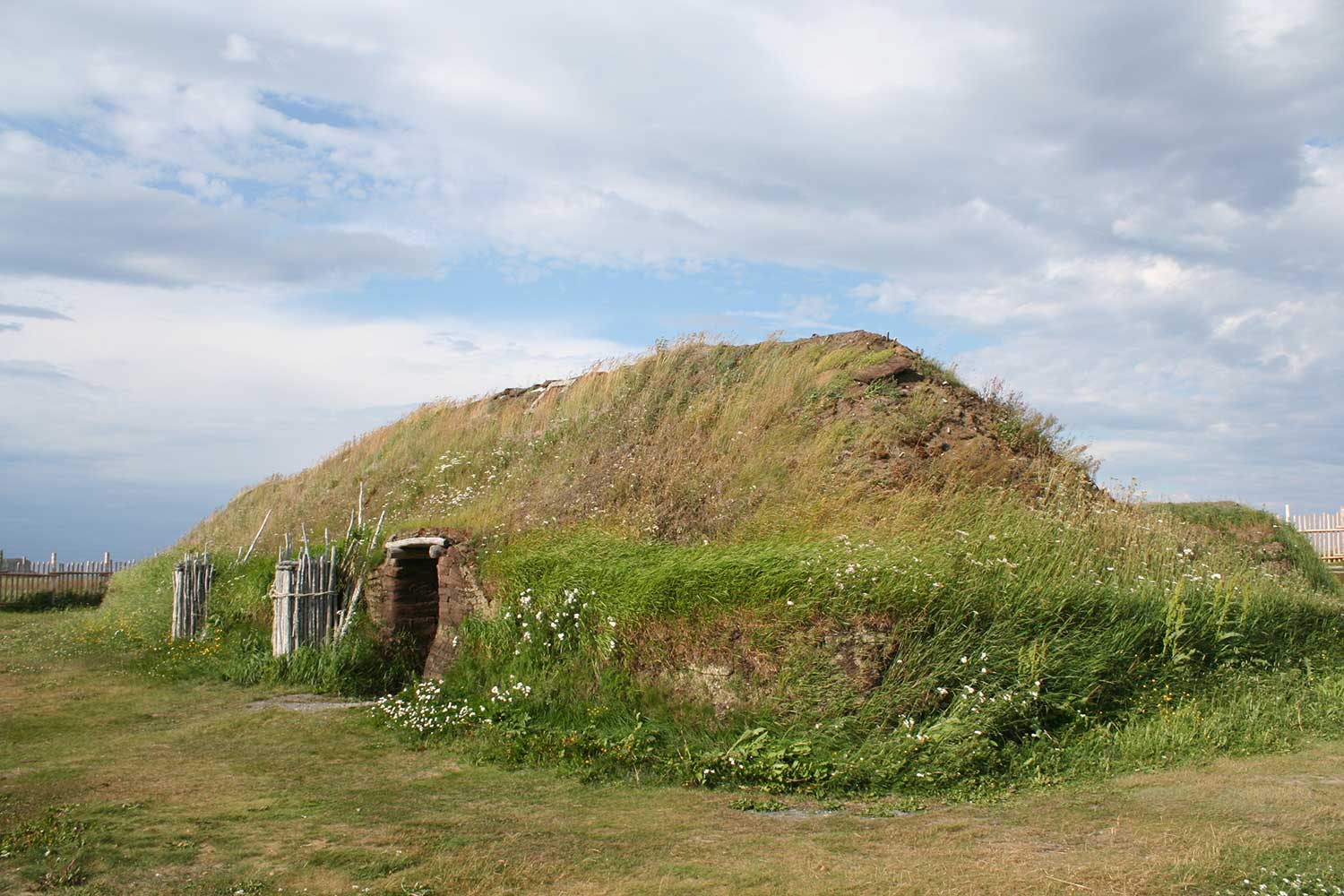
Welcome to L’Anse aux Meadows, a place filled with rich cultural and historical significance. Located in Newfoundland, Canada, L’Anse aux Meadows is a UNESCO World Heritage site that offers visitors a glimpse into the fascinating Viking history. This archaeological site is believed to be the first known evidence of Norse exploration in North America, dating back to the 11th century. As a renowned landmark, L’Anse aux Meadows continues to captivate visitors with its remarkable discoveries and stunning landscapes. In this article, we will dive into 15 astonishing facts about L’Anse aux Meadows, providing you with a deeper understanding of its importance and the wonders it holds. So, prepare to embark on a journey through time and uncover the secrets of this extraordinary historical site.
Key Takeaways:
- L’Anse aux Meadows is the only confirmed Viking settlement in North America, showcasing the Vikings’ early presence and exploration of the continent in the 11th century.
- This UNESCO World Heritage Site offers a glimpse into Viking daily life, craftsmanship, and navigation skills, providing valuable insights into North America’s multicultural history.
The Viking settlement at L’Anse aux Meadows is the only known Norse site in North America.
L’Anse aux Meadows, located in Newfoundland, Canada, holds a significant place in history as the only confirmed site where Vikings established a settlement in North America. This remarkable fact highlights the Viking presence in this region centuries before Christopher Columbus set foot on the continent.
It was declared a UNESCO World Heritage Site in 1978.
In recognition of its cultural and historical importance, L’Anse aux Meadows was designated as a UNESCO World Heritage Site in This prestigious status solidifies its significance and ensures its preservation for future generations.
Archaeological exploration began in the 1960s.
The discovery of L’Anse aux Meadows is relatively recent, with archaeological excavations commencing in the 1960s. The site’s excavation provided valuable insights into the Viking voyages and interactions in North America, shedding light on their exploration and colonization efforts.
Ancient artifacts were unearthed at the site.
During the excavations, archaeologists uncovered a variety of artifacts that corroborate the presence of Vikings at L’Anse aux Meadows. These artifacts include Norse-style structures, iron nails, tools, and evidence of metalworking, all reinforcing the authenticity of the Viking settlement.
The settlement dates back to approximately 1000 AD.
Based on radiocarbon dating and historical analysis, it is estimated that the L’Anse aux Meadows settlement was established around the year 1000 AD. This places it within the timeframe of the Viking Age and further supports the Viking presence in North America during this period.
It served as a temporary base for Norse expeditions.
L’Anse aux Meadows was not intended as a permanent settlement but rather as a temporary base for Norse expeditions exploring the regions further west. It highlights the Vikings’ ambitions to expand their influence and trade networks across the North Atlantic.
The site provides evidence of Norse craftsmanship.
The artifacts discovered at L’Anse aux Meadows showcase the remarkable craftsmanship and skills of Norse artisans. From woodworking tools to weaving implements, these findings highlight the Vikings’ aptitude for practical and artistic craftsmanship.
The settlement was likely abandoned within a decade of its establishment.
The reasons behind the abandonment of L’Anse aux Meadows remain uncertain, but it is believed that changing climate conditions, conflicts with indigenous populations, and the challenges of sustaining a Viking presence in a new land played a role in its eventual abandonment within a decade.
L’Anse aux Meadows provides insights into Viking navigation.
The settlement’s location in Newfoundland offers valuable insights into Viking navigation and seafaring skills. The discovery of the site reinforces the notion that the Vikings possessed advanced navigational techniques, allowing them to traverse vast distances across the North Atlantic.
The name “L’Anse aux Meadows” translates to “Jellyfish Cove.”
The name of the site, L’Anse aux Meadows, is derived from French and translates to “Jellyfish Cove” in English. This unique name adds to the mystique and allure of the place, evoking images of a stunning coastal setting.
It is believed to have been a stopover point for Viking voyages to Vinland.
Vinland, often associated with present-day Newfoundland, is mentioned in Norse sagas as a place visited by Vikings in their transatlantic voyages. L’Anse aux Meadows is thought to have served as a stopover point or a precursor to further explorations into Vinland.
The site offers a glimpse into Viking daily life.
The artifacts and remains at L’Anse aux Meadows shed light on the daily life of the Vikings who inhabited the settlement. From their dwellings to their domestic activities, these discoveries provide insights into the social and cultural aspects of Viking life in North America.
L’Anse aux Meadows showcases North America’s multicultural history.
The Viking presence at L’Anse aux Meadows is a testament to North America’s rich and diverse multicultural history. It serves as a reminder that various civilizations and cultures have intersected and left their mark on this vast continent throughout the ages.
It is a popular tourist destination.
L’Anse aux Meadows has become a popular tourist destination, attracting visitors from around the world who wish to explore this unique archaeological site. Its stunning coastal landscapes and immersive historical experience make it a must-visit for history enthusiasts and curious travelers alike.
L’Anse aux Meadows exemplifies the spirit of exploration.
The Viking settlement at L’Anse aux Meadows stands as a testament to the indomitable spirit of exploration that has shaped human history. It serves as a symbol of humanity’s drive to venture into the unknown, pushing boundaries, and uncovering new territories.
Conclusion
In conclusion, L’Anse aux Meadows is truly a remarkable place that offers a rich insight into the history and culture of the Vikings. With its well-preserved archaeological remains and stunning natural beauty, it continues to captivate visitors from all over the world. The site’s recognition as a UNESCO World Heritage site and its status as the only known Norse settlement in North America make it an important cultural landmark.
From the ancient artifacts to the reconstructed dwellings, L’Anse aux Meadows provides a fascinating glimpse into the lives of the Viking explorers who ventured across the Atlantic centuries ago. Whether you are an archaeology enthusiast, history buff, or simply curious about the Vikings, a visit to L’Anse aux Meadows is a must. Explore the site, marvel at the breathtaking scenery, and immerse yourself in the captivating tales of the Norsemen who once roamed these shores.
FAQs
1. What is L’Anse aux Meadows?
L’Anse aux Meadows is an archaeological site located in Newfoundland, Canada. It is the only known Norse settlement in North America and dates back to around the 11th century.
2. How was L’Anse aux Meadows discovered?
L’Anse aux Meadows was discovered in 1960 by Norwegian explorer Helge Ingstad and his wife, archaeologist Anne Stine Ingstad. They found evidence of a Norse presence in the area, including Viking artifacts and the remains of buildings.
3. What can I see at L’Anse aux Meadows?
At L’Anse aux Meadows, visitors can explore the reconstructed Norse buildings, including a blacksmith’s forge, a chieftain’s hall, and several dwellings. There are also informative exhibits that provide insights into Viking life and the history of the site.
4. Can I visit L’Anse aux Meadows?
Yes, L’Anse aux Meadows is open to visitors. There is a visitor center where you can obtain tickets and information about guided tours. The site offers a unique opportunity to step back in time and experience the Viking heritage firsthand.
5. Is L’Anse aux Meadows a UNESCO World Heritage site?
Yes, L’Anse aux Meadows was designated a UNESCO World Heritage site in 1978. It is recognized for its archaeological significance and contribution to our understanding of Norse exploration in North America.
6. Are there any other Viking sites in North America?
No other Viking sites have been confirmed in North America, making L’Anse aux Meadows a truly unique and important archaeological discovery.
7. Are there guided tours available at L’Anse aux Meadows?
Yes, guided tours are available at L’Anse aux Meadows. Knowledgeable guides provide insights into the history and significance of the site, enriching the visitor experience.
8. Is L’Anse aux Meadows suitable for children?
Yes, L’Anse aux Meadows is suitable for children. It offers a great learning experience for kids, allowing them to explore Viking history and archaeology in an interactive and engaging way.
9. Can I take photographs at L’Anse aux Meadows?
Yes, visitors are allowed to take photographs at L’Anse aux Meadows. Feel free to capture the beauty of the site and the fascinating Norse artifacts on camera.
10. Are there nearby accommodations and amenities?
Yes, there are accommodations and amenities available near L’Anse aux Meadows. You can find hotels, restaurants, and other services in the nearby communities of St. Anthony and Griquet.
Intrigued by L'Anse aux Meadows' Viking history? Satisfy your curiosity with more captivating facts! Dive into Newfoundland and Labrador's unique culture and natural wonders. Explore the magnificence of Fatehpur Sikri, another UNESCO World Heritage Site. Uncover the secrets of Kourion, an ancient archaeological site in Cyprus. Each destination offers a fascinating journey through time, waiting to be discovered. So, which adventure will you embark on next?
Was this page helpful?
Our commitment to delivering trustworthy and engaging content is at the heart of what we do. Each fact on our site is contributed by real users like you, bringing a wealth of diverse insights and information. To ensure the highest standards of accuracy and reliability, our dedicated editors meticulously review each submission. This process guarantees that the facts we share are not only fascinating but also credible. Trust in our commitment to quality and authenticity as you explore and learn with us.


